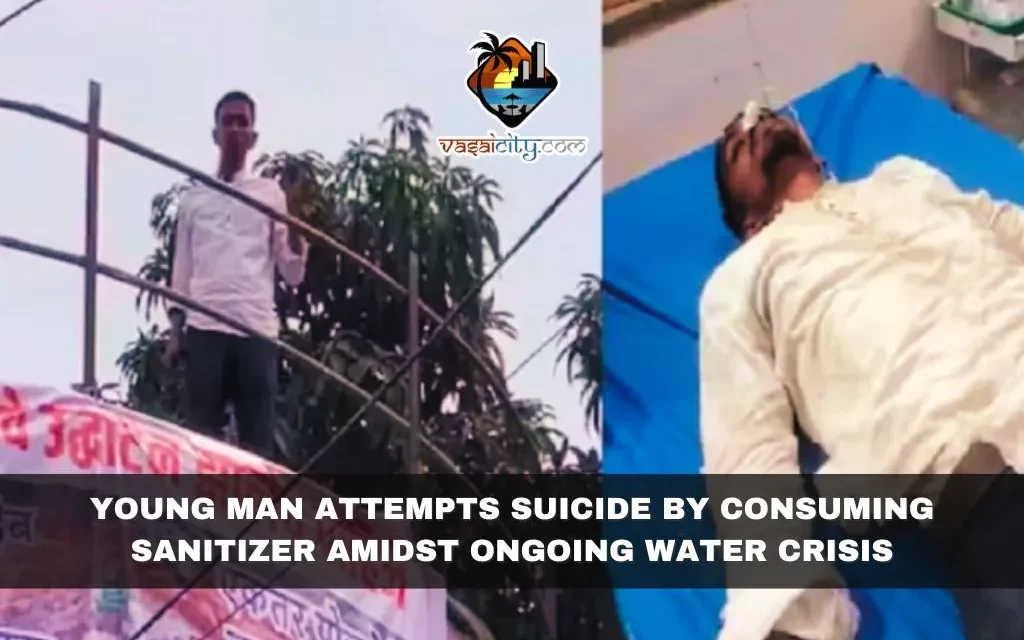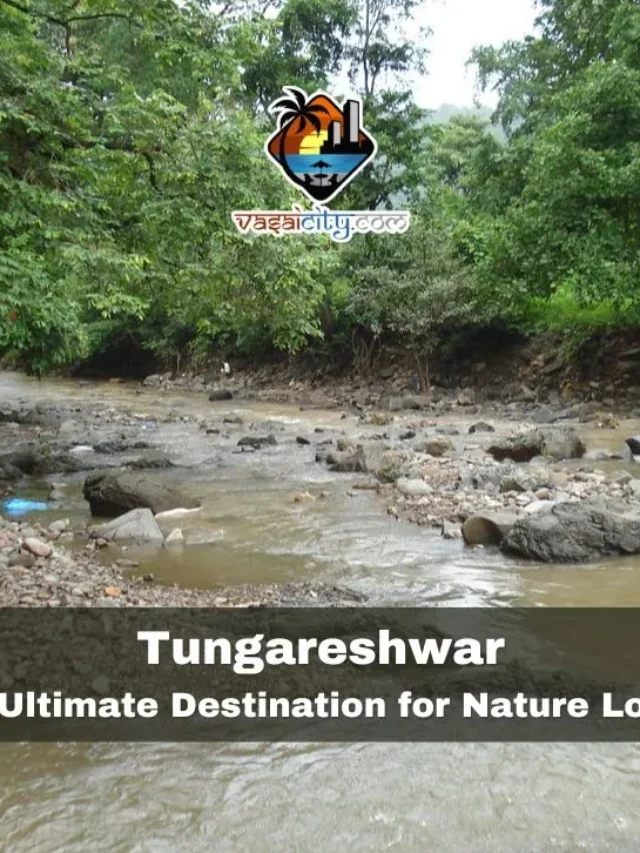Vasai, Palghar – India – In a harrowing turn of events, a young man in Vasai-Virar resorted to desperate measures by ingesting sanitizer as the water crisis in the region reached an alarming peak. The relentless monsoon rains had resulted in the swift construction of water reservoirs in parts of Vasai and Virar. However, the eastern parts of these regions remained parched and struggling with limited water supply. The situation has left residents anxiously waiting for authorities to take action, leading to mounting frustrations.
The drought-like conditions in Vasai and Virar had prompted the authorities to expedite the construction of water reservoirs in various areas. Still, the western regions received only a minimal and insufficient water supply even after days of rain. This stark contrast in water availability has agitated the people.
In the midst of this water crisis, a young man, Nanasaheb Kolekar, took drastic action by consuming sanitizer, endangering his life in a desperate attempt to draw attention to the dire situation. The lack of progress in the construction and distribution of water reservoirs had driven him to the brink.
The new water reservoir project aimed to provide a total of 230,000 liters of water, with 100,000 liters allocated from the Surya Yojana, 100,000 liters from the Navya Yojana, and 10,000 liters each from 10 other areas. An additional 185,000 liters were expected from a new plan. However, despite the completion of this project, it remained unopened for two months due to scheduling conflicts among the officials, leaving the local populace frustrated and agitated.
As the people grew increasingly restless, they demanded immediate action. Frustrated with the ongoing delays, the residents called upon Nanasaheb Kolekar and his fellow activists to either push for a swift inauguration or force the officials to expedite the process. In response to this outcry, Kolekar and his compatriots initiated a protest on Monday.
To expedite a resolution, Kolekar had also threatened to consume poison if a decision was not reached swiftly. He had even brandished a bottle of sanitizer as a symbol of his resolve. To ensure his message was heard, Kolekar chose the noon hour, a time when Agnishaaman Dal personnel were stationed near his residence. Unnerved by the prospect of a tragedy, the personnel promptly escorted Kolekar to the nearest healthcare facility, the Nalasopara Municipal Hospital, where he is currently undergoing treatment.
This dramatic incident has propelled the water crisis in Vasai and Virar into the national spotlight. The local residents, who have been bearing the brunt of this crisis, have now gained support from neighboring communities and the wider public. They are no longer willing to endure this severe water scarcity silently.
The ongoing water crisis in the Vasai-Virar region, characterized by the swift construction of water reservoirs in some areas and the stark insufficiency of water supply in others, has pushed many residents to their breaking point. This drastic contrast in water availability has amplified the call for immediate action and expedited inauguration of the newly constructed reservoirs.
As the situation continues to escalate, it has become a matter of life and death for the residents who find themselves in the throes of this dire water crisis. The Vasai-Virar region is no stranger to water woes, but the current situation is especially severe, with many residents anxiously awaiting a swift resolution.
The construction of these new reservoirs was meant to provide much-needed relief to the residents of Vasai and Virar. While the western parts of the region have received minimal water, the eastern regions, which have been particularly affected by the scarcity, remain deprived.
The Surya Yojana and Navya Yojana were intended to provide a lifeline to these parched areas, offering a total of 230,000 liters of water. Despite the project’s completion, the delay in its inauguration has left the people with limited options for accessing water. The prolonged delays in the reservoir’s inauguration have raised frustrations to a boiling point.
In the midst of this turmoil, Nanasaheb Kolekar’s act of desperation has become a poignant symbol of the community’s plight. His actions not only drew attention to the water crisis but also ignited a renewed sense of urgency among the residents.
Nanasaheb’s act of ingesting sanitizer was a stark reminder of the desperation many residents are feeling. As he clutched the bottle in his hand, it symbolized the community’s struggle for survival and their plea for immediate intervention.
In response to this alarming incident, local activists, concerned citizens, and other residents rallied together to demand swift action from the authorities. They are no longer willing to wait in silence as their livelihoods and well-being hang in the balance.
The call for a speedy resolution has grown louder and more impassioned. The people of Vasai and Virar have united under the banner of urgency, demanding that the authorities respond to their cries for help.
While this incident has brought the water crisis in Vasai and Virar to the forefront of public awareness, it also sheds light on the larger issue of water scarcity that plagues many parts of India. The situation in Vasai and Virar reflects the broader challenges faced by numerous communities across the country.
The ongoing water crisis in Vasai and Virar is symptomatic of a nationwide issue that requires immediate attention. While the situation in these regions has garnered significant media coverage, it is crucial to recognize that the challenges faced by these residents are not unique.
Water scarcity is a pressing concern that affects countless communities across India. The lack of access to clean and reliable water sources poses a serious threat to the health, well-being, and overall quality of life for many residents. It is a challenge that demands proactive and sustainable solutions at both the local and national levels.
The people of Vasai and Virar have shown remarkable resilience in the face of adversity. Their collective determination and their refusal to be silent about their suffering have sent a powerful message to the authorities and the wider public. They have demonstrated that, when faced with a crisis, communities can come together and demand the changes they need.
The actions of Nanasaheb Kolekar, while extreme, have ignited a sense of urgency that has been sorely lacking in the region’s response to the water crisis. This incident serves as a wake-up call, a stark reminder that the situation cannot be allowed to continue unabated. It is a call to action, not only for the residents of Vasai and Virar but for all of India.
In a nation that has often faced the harsh reality of water scarcity, it is time to take stock of the challenges at hand and work towards lasting solutions. The people of Vasai and Virar have shown that they are willing to fight for their right to clean and accessible water, and it is a fight that deserves the attention of the entire country.
The ongoing water crisis in Vasai and Virar is not an isolated incident but rather a reflection of the larger issue of water scarcity in India. While the situation in these regions has reached a critical point, it is imperative to recognize that this crisis is not unique to Vasai and Virar. Water scarcity is a national problem that demands immediate attention.













